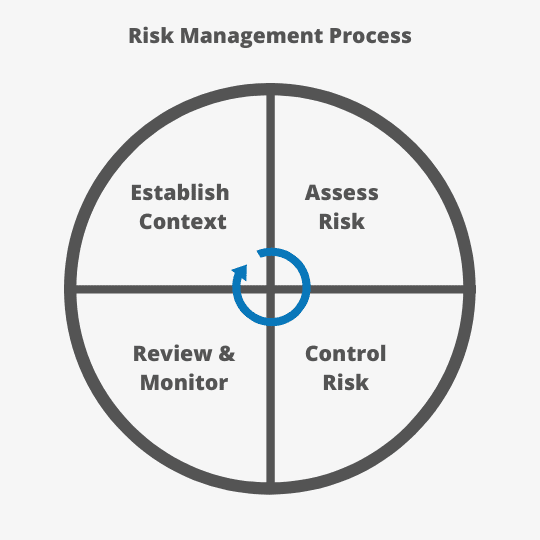Cyber Risk Assessments
Cyber Risk Assessments
The Necessity
According to the Herjavec Group, cybercriminal activity is expected to be one of the largest challenges humanity faces in the next two decades. Why? We simply aren’t prepared. It’s a quickly evolving field and security technology is struggling to keep up. Cybersecurity Ventures even predicts that cybercrime will end up costing the world over $10.5 trillion annually by 2025.
As assessments are completed, future assessments will become easier to perform as well since you will have a template to follow and predetermined focus points. Sticker shock and scare tactics aside, there are major benefits to performing cyber risk assessments.
Improved Communication
A thorough cyber risk assessment requires employees from different departments to communicate. This effectively increases organizational visibility and awareness, contributing to a risk-aware culture.
Better Self-Awareness
Knowing exactly where your organization’s weaknesses lie is key to growth. Accurately pinpointing where to direct resources helps your business to improve and expand because being in tune with your weaknesses also reveals your strengths.
Prevent Future Incidents
Data breaches, data loss, regulatory issues – none of them sound like a good time. The act of identifying and mitigating identified risks contributes to long-term security. This prevents disruptions to work and helps remove the element of the unknown from business planning. The cost savings from preventing incidents is also very attractive to most, if not all, organizations.
Who’s Responsible for Cyber Security?
This is often a question we’re asked by larger companies who need to distribute work to the proper employees. The truth is, everyone should take responsibility in part. Yes, your security or IT teams may take charge of leading the assessment and evaluation, but its truly a collective effort that makes your assessment successful. While evaluating other departments, you’ll need to work with them to understand different job functions. This helps when your data shows that you need to adjust a practice or find a new way of meeting the same end result. Hands-on knowledge combined with IT’s understanding of the company’s network infrastructure and systems will contribute to a comprehensive assessment.
Each department will naturally treat risks independently, based on its main function. Using a cybersecurity framework and working together with each department ensures cyber risks are being examined holistically.
How to Perform a Cyber Risk Assessment
If you’re familiar with a typical assessment, the steps for a cyber risk assessment shouldn’t be too foreign to you. To simplify the process, we will group the assessment into three main categories.
1. Determine Scope and Identify
This is essentially “assessment prep.” First, determine the scope of the assessment. A cyber assessment is still very broad, so you need to determine the purpose of your assessment, which systems or processes you’re evaluating, what infrastructure you’re trying to protect, etc.
Identify your contacts for each location or department that will be answering your requests for information. You should have noted all company hardware, network diagrams, existing policies, and any industry standard or regulation questions that need to be addressed.

2. Assess and Calculate
This is essentially “assessment prep.” First, determine the scope of the assessment. A cyber assessment is still very broad, so you need to determine the purpose of your assessment, which systems or processes you’re evaluating, what infrastructure you’re trying to protect, etc.
3. Review and Make Changes
After reviewing your assessment data, you’ll have a clear picture of your most pressing problem areas and how resources should be directed. Define targets within budget and set deadlines for changes prior to the next assessment. You’ll start to prioritize initiatives and implement system changes and policies. Report on all assessment findings, and changes taken. Present your reports to management, file them as proof of assessment (in case of an audit, for example), and save them for comparison with future assessments to ensure risk is reducing.
Cyber Risk Assessment Automation
For starters, a proper risk assessment software will have a built-in grading system so you can easily evaluate company risks. The software should also make it easy to collaborate with coworkers. As we mentioned, this is a team effort. Simply assigning your designated staff their specific questions and granting access will save you hours of emailing and follow-up. The last major focus should be on automated reporting. Assessment software will have charts and graphs that easily show risk across the company, progress on assessments, levels of compliance, etc. RiskWatch even has a customizable reporting template, because we know creating C-level reports take hours to complete. Just select which assessment data you want to be included and customize the layout and brand colors.
Have a cyber assessment coming up? Use CyberWatch – its free! Your first 3 assessments are on us. The National Institute of Standards and Technology (NIST) has developed a cybersecurity framework for best practices, and we offer this as one of our free content libraries.

